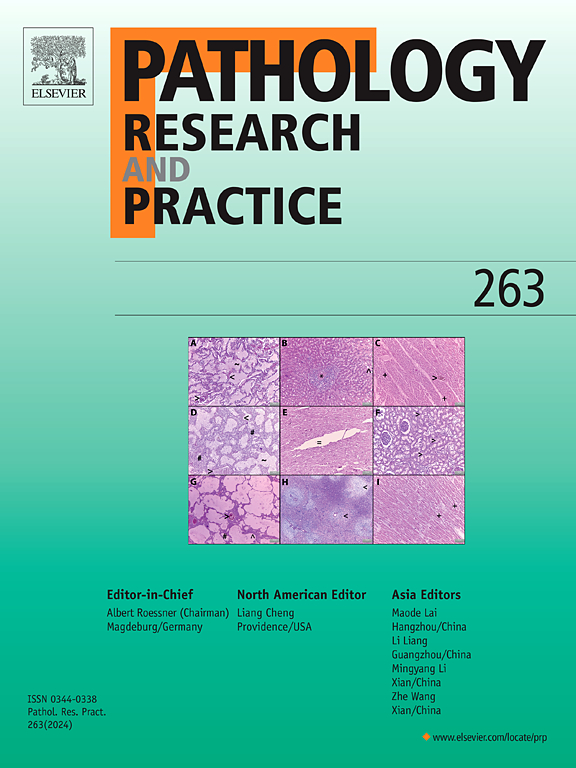自身免疫性肝病患儿的单核细胞亚群。
IF 2.9
4区 医学
Q2 PATHOLOGY
引用次数: 0
摘要
背景:自身免疫性肝病患者需要个体化的长期免疫抑制治疗,在组织学完全缓解后才有可能停止治疗,而且需要反复进行肝活检。目的:本研究的目的是评估预测儿童自身免疫性肝病复发的可能性:研究使用的生物材料是80名被诊断患有自身免疫性肝炎和自身免疫性硬化性胆管炎的儿童的血清。根据疾病活动性和治疗方法将患者分为四组:结果:通过流式细胞术测定了单核细胞亚群的百分比,并分析了疾病活动性、炎症和纤维化标志物,详细研究了所研究参数的关系和诊断价值。研究结果表明,疾病活动性与血液中单核细胞亚群百分比分布的变化之间存在显著关系。研究发现,中间型 CD14++/CD16+ 单核细胞的百分比与疾病活动性相关,而非典型 CD14lowCD16+ 单核细胞在诊断疾病复发方面具有很高的诊断价值:这些发现不仅拓宽了人们对自身免疫性肝病发病机制的认识,还为利用单核细胞亚群作为预测复发的潜在生物标志物指明了前景,有助于制定更有效的临床管理策略。本文章由计算机程序翻译,如有差异,请以英文原文为准。
Monocyte subpopulations in children with autoimmune liver disease
Background
Patients with autoimmune liver diseases require individualized long-term immunosuppressive therapy, whose discontinuation is possible after complete histological remission and that requires repeated liver biopsy. In view of this, the search for non-invasive markers is essential for patients with autoimmune liver disease.
Purpose
The purpose of this research is to assess the possibility of predicting the recurrence of autoimmune liver disease in children.
Method
The biological material used in the study was blood serum from 80 children diagnosed with autoimmune hepatitis and autoimmune sclerosing cholangitis. Patients were divided into four groups according to disease activity and therapeutic approach.
Results
The percentage of monocyte subpopulations was determined by flow cytometry, and disease activity, inflammation, and fibrosis markers were analyzed to study the relationship and diagnostic value of the parameters studied in detail. The results of the study indicate a significant relationship between disease activity and changes in the distribution of the percentage of monocyte subpopulations in the blood. The percentage of intermediate CD14++/CD16+ monocytes was found to correlate with disease activity, and non-classical CD14lowCD16+ monocytes were found to be of high diagnostic value in the diagnosis of disease relapse.
Conclusions
These findings not only expand the understanding of the pathogenesis of autoimmune liver disease but also point to the prospects of using monocyte subpopulations as potential biomarkers for predicting relapse, contributing to the development of more effective clinical management strategies.
求助全文
通过发布文献求助,成功后即可免费获取论文全文。
去求助
来源期刊
CiteScore
5.00
自引率
3.60%
发文量
405
审稿时长
24 days
期刊介绍:
Pathology, Research and Practice provides accessible coverage of the most recent developments across the entire field of pathology: Reviews focus on recent progress in pathology, while Comments look at interesting current problems and at hypotheses for future developments in pathology. Original Papers present novel findings on all aspects of general, anatomic and molecular pathology. Rapid Communications inform readers on preliminary findings that may be relevant for further studies and need to be communicated quickly. Teaching Cases look at new aspects or special diagnostic problems of diseases and at case reports relevant for the pathologist''s practice.

 求助内容:
求助内容: 应助结果提醒方式:
应助结果提醒方式:


